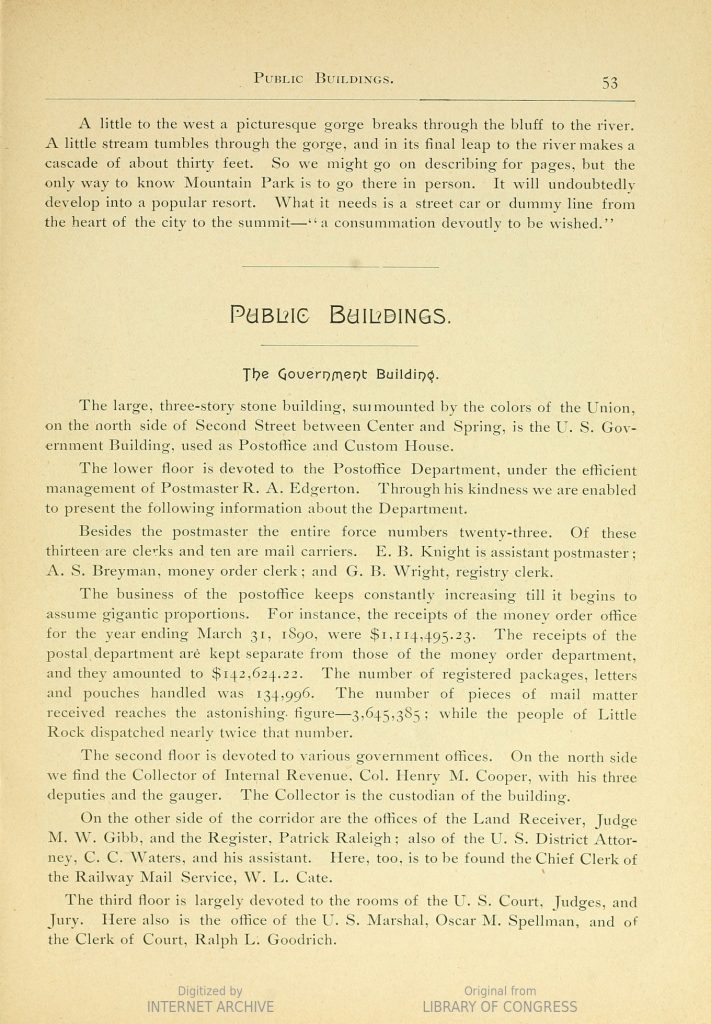“Public Buildings -- The Custom House and Post Office”
Click here to download the full excerpt in PDF format

Excerpt of a city guidebook on Little Rock, 1890, about public buildings in the city, including the Post Office Building where Mifflin Gibbs worked.
Excerpts
The large, three-story stone building, surmounted by the colors of the Union, on the north side of Second Street between Center and Spring, is the U. S. Government Building, used as Post office and Custom House…
The business of the post office keeps constantly increasing till it begins to assume gigantic proportions. For instance, the receipts of the money order office for the year ending March 31, 1890, were $1,114,495.23. The receipts of the postal, department are kept separate from those of the money order department, and they amounted to $142,624.22. The number of registered packages, letters and pouches handled was 134,996. The number of pieces of mail matter received reaches the astonishing, figure —3,645,385; while the people of Little Rock dispatched nearly twice that number.
The second floor is devoted to various government offices. On the north side we find the Collector of Internal Revenue, Col. Henry M. Cooper, with his three deputies and the gauger. The Collector is the custodian of the building. On the other side of the corridor are the offices of the Land Receiver, Judge M. W. Gibb(s), and the Register, Patrick Raleigh ; also of the U. S. District Attorney, C. C. Waters, and his assistant. Here, too, is to be found the Chief Clerk of the Railway Mail Service, W. L. Cate.
Questions:
What job did Mifflin (M.W.) Gibbs have when this primary source was created? What do you think his responsibilities were in this job? Do you think it was an important job? Why/why not?
Describe the drawing of the building. What peoples, objects, and activities do you see? Then, use Google Maps street view and find Second Street between Center and Spring Street in downtown Little Rock. How does the building in the drawing compare to the current-day building?